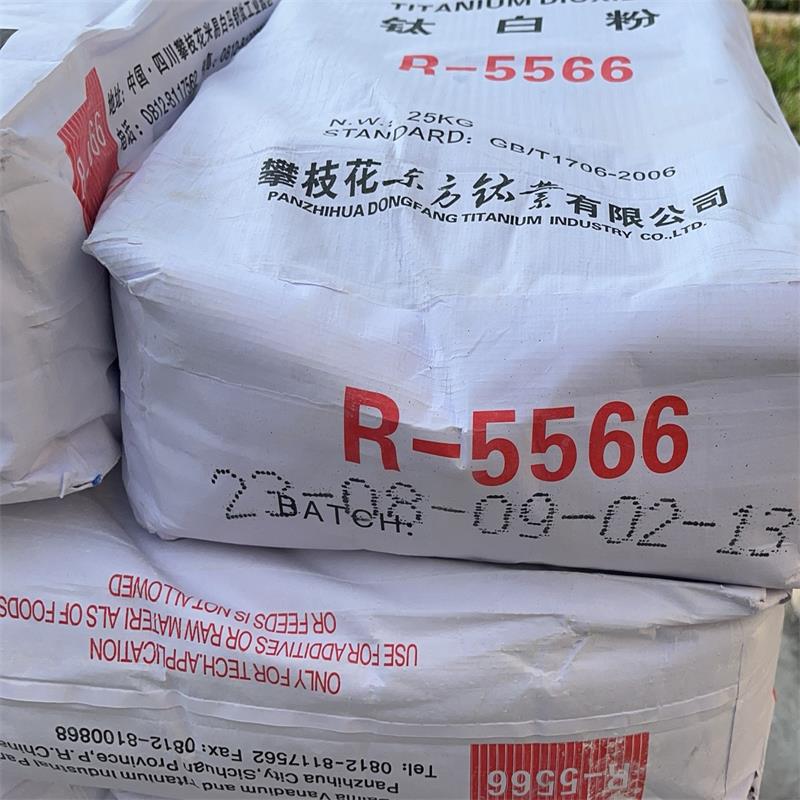
Privacy statement: Your privacy is very important to Us. Our company promises not to disclose your personal information to any external company with out your explicit permission.
![]() October 11, 2023
October 11, 2023

As one of the two most important types of Titanium Dioxide, rutile titanium dioxide is an excellent white pigment with high dispersion, high weather resistance, high covering power, and excellent stability. Widely used in interior and exterior latex coatings, industrial coatings, composite inks, flexographic inks, laminated paper, plastic color masterbatches, powder coatings, etc.
So, what are the physical properties of rutile titanium dioxide powder?
1. Relative density
The relative density of titanium dioxide is related to its crystal form, particle size, chemical composition, and especially surface treatment amount. During the manufacturing process, it increases with the increase of calcination temperature and prolongation of calcination time. Among commonly used white pigments, titanium dioxide has the smallest relative density, while white pigments of the same quality have the largest surface area and highest pigment volume. The relative density of anatase titanium dioxide is 3.8-3.9g/cm3, while the relative density of rutile titanium dioxide is 4.2-4.3g/cm3.
2. Melting point and boiling point
Due to the fact that both anatase and plate titanium dioxide transform into rutile type at high temperatures, their melting and boiling points do not actually exist. The melting point values of rutile type titanium dioxide are inconsistent in various data records, generally believed to be between 1800 and 1875 ℃. Some data suggest that the melting point in air is 1830 ± 15 ℃, while in oxygen rich environment it is 1879 ± 15 ℃. The melting point is related to the purity of titanium dioxide. The boiling point of rutile type titanium dioxide is (3200 ± 300) K.
3. Dielectric constant
Due to its high dielectric constant, titanium dioxide has excellent electrical properties. Under the action of an external electric field, the ions interact with each other, forming an extremely strong local internal electric field. Under the action of this internal electric field, the outer electron orbitals of the ions undergo strong deformation, and the ions themselves also undergo significant displacement.
The trace impurities contained in the titanium dioxide crystal form have a significant impact on the dielectric constant. The dielectric constant of the rutile type varies with the direction of the titanium dioxide crystal: when parallel to the C-axis, its dielectric constant is measured to be 180; 90 when at right angles; The average value of its powder is 114. The dielectric constant of anatase titanium dioxide is only 48.
4. Conductivity
Titanium dioxide has the properties of a semiconductor, its conductivity rapidly increases with temperature, and it is also very sensitive to hypoxia. Rutile type titanium dioxide is still an insulator at 20 ℃, but its conductivity increases by 107 times when heated to 420 ℃; The conductivity of stoichiometric titanium dioxide (TiO2) is less than 10-10s/m, but when titanium dioxide loses a small amount of oxygen, such as TiO2 1.9995, its conductivity is 10-1s/m. The electronic industry often uses the dielectric constant and semiconductor properties of rutile type titanium dioxide to produce electronic components such as ceramic capacitors.
5. Hardness
If Mohs hardness is measured on a 10 point scale (its value only represents the hardness level of various crystals and does not represent their true ratio), the hardness of anatase titanium dioxide is 5.5-6.0, and that of rutile titanium dioxide is 6-7. The hardness is related to the crystal structure of titanium dioxide, and in production, it is related to the purity of the product and the calcination temperature. High temperatures are prone to sintering, and the hardness also increases accordingly. It is precisely because of the high hardness of rutile titanium dioxide, which is difficult to crush, that the wear rate of the spinneret hole is higher, and the wear of the roller is also greater, so it is not suitable for chemical fiber extinction and photographic concave printing.
6. Hygroscopicity
Although titanium dioxide has hydrophilicity, its hygroscopicity is not very strong, and the hygroscopicity of the anatase type is greater than that of the rutile type. The hygroscopicity of titanium dioxide is related to the properties of the treatment agent during surface treatment, as well as to the size of its specific surface area. The hygroscopicity of titanium dioxide with a larger specific surface area is also slightly higher.
7. Thermal stability
Titanium dioxide is a thermally stable compound that undergoes slight deoxygenation under strong vacuum heating, accompanied by a dark blue color. This reaction is reversible and will return to its original white color after cooling.
We supply Titanium Dioxide R996 , Titanium Dioxide R699 , Titanium Dioxide R698 , Titanium Dioxide R6618 , Titanium Dioxide R218 , Titanium Dioxide R216 , Titanium Dioxide ART312 , Titanium Dioxide R5566 , Dioxide Titanium R767 , TiO2 powder anatase grade . And we also supply Pvc Resin SG5 , PVC Resin SG3 , PVC Resin SG8 and PVC Paste Resin such as 440 ,450
The above is the Physical properties of rutile type titanium dioxide powder we have listed for you. You can submit the following form to obtain more industry information we provide for you.
You can visit our website or contact us, and we will provide the latest consultation and solutions
Send Inquiry
Most Popular
lastest New
Send Inquiry

Privacy statement: Your privacy is very important to Us. Our company promises not to disclose your personal information to any external company with out your explicit permission.

Fill in more information so that we can get in touch with you faster
Privacy statement: Your privacy is very important to Us. Our company promises not to disclose your personal information to any external company with out your explicit permission.